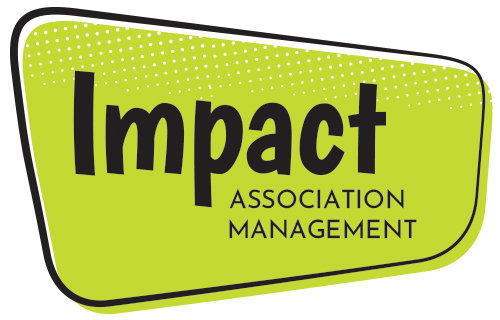Our team recently attended ASAE’s Annual Meeting and Exposition where they learned all about how to better manage associations. One of the topics that stuck out was that of applying social work skills to association management. This session focused on emotional intelligence and how it applies to leadership.
Emotional intelligence is your ability to understand other people and their motives as well as your own. Your ability to understand and control your own emotions is tied to your emotional intelligence or quotient. You may be wondering how this ties to running your organization. Working on how you see others’ views, react, and read people are not only skills that make for healthy personal relationships, but professional as well. Learn to have more productive conversations by utilizing the following tips, ideas, and solutions.
The first step in amplifying your emotional intelligence is to relax before you react. When someone reacts to something, the first 90 seconds are chemical responses. After that, the response is a choice. Provide yourself and others with those 90 seconds to breathe. This does not exclude nonverbal reactions. If you have a board member that you are always butting heads with, take a moment to relax your face, listen, and absorb before reacting.
It is also necessary to reflect on your own emotions when it comes to the organization. How might people receive your reactions? Do you provide a space for suggestions and ideas? Try to get a better grasp of this by asking for feedback or perspectives from other leaders of the organization. This will help you to grow into a more effective communicator. It will also open the dialogue for the rest of the board.
Although your board might get along and agree 90% of the time, conflict is inevitable. Despite being inevitable, it isn’t necessarily hostile. We tend to get defensive if someone has a differing opinion but that isn’t always necessary. It is important to hear more than one side and be open to change. If you don’t see conflict happening, it may be that people don’t feel comfortable coming to you and expressing it which is often worse than the conflict itself. If you can learn to handle conflict appropriately, it can lead to increased understanding, communication, and positive growth within the organization.
Knowing that you will at some point deal with conflict, it is important to understand how to de-escalate it and resolve it when it arises. If you are in the middle of a conflict within your organization, make sure your non verbal cues are giving off the impression that you are not angry or defensive, simply listening and taking in the other person’s perspective. This includes relaxing your facial muscles, speaking in a lower tone of voice, and not pointing fingers, smiling, etc. Once the person you are in the conflict with has expressed their thoughts, begin a discussion that focuses on de-escalation. Answer any informational questions, empathize with feelings, and ask for help in understanding if you are not fully grasping what they are trying to express.
From there, it is crucial to dig deeper. It is easy to see the surface level of how someone is reacting and a few things that might make them react in that way. Ask yourself where the conflict is really coming from. Think of physical and emotional needs that could be resulting in the way the conversation is going. Understanding this will not make you an expert in conflict but will immensely help you to understand the people you are working with each day. Take the time to become a better listener and communicator and your organization will see the results. A board that is able to overcome these types of obstacles, can overcome anything.
Check out our free tools and templates to incorporate emotional intelligence into your leadership strategy!

